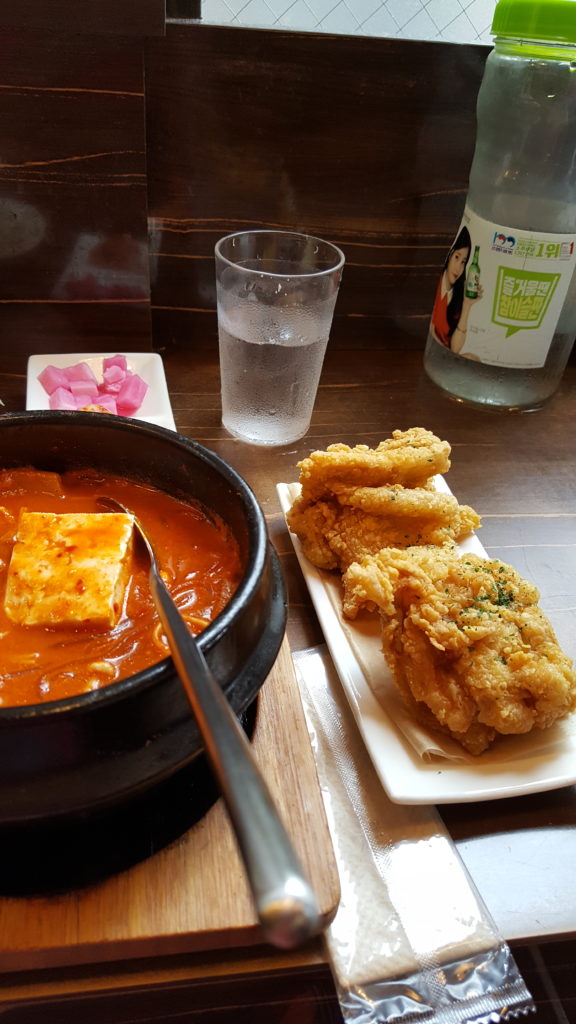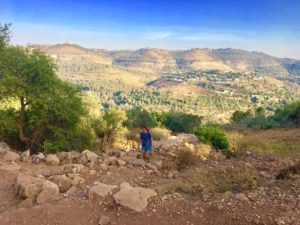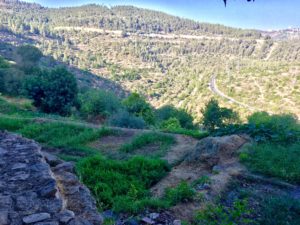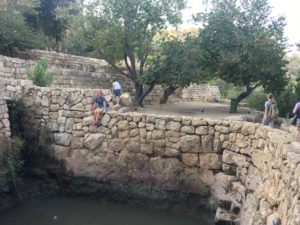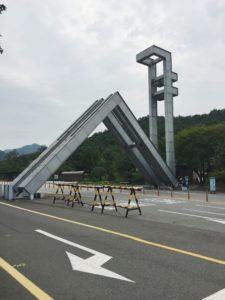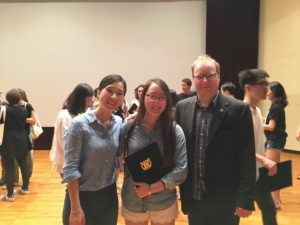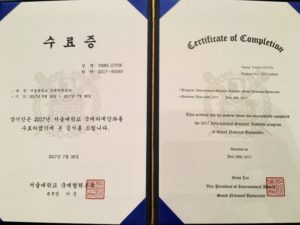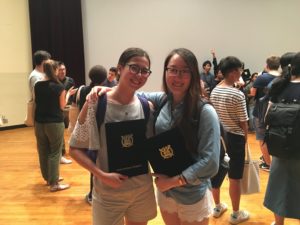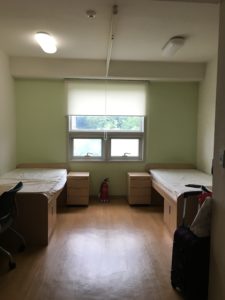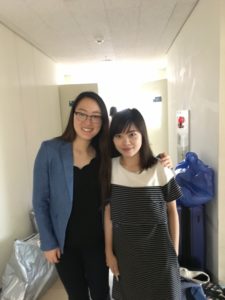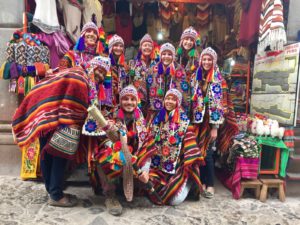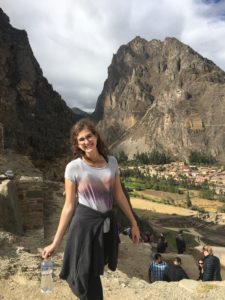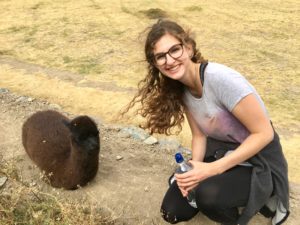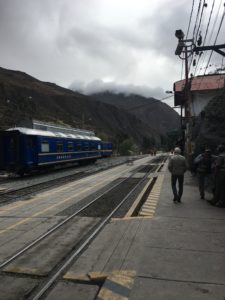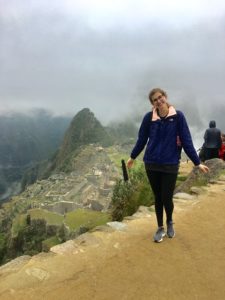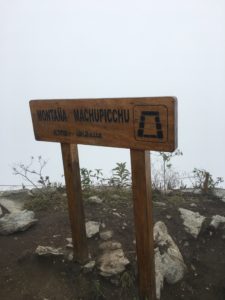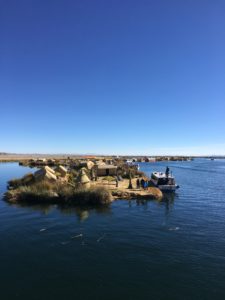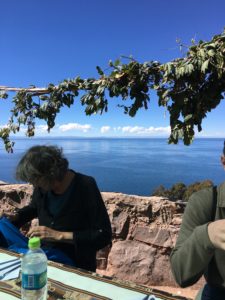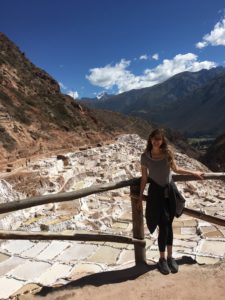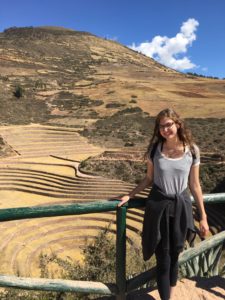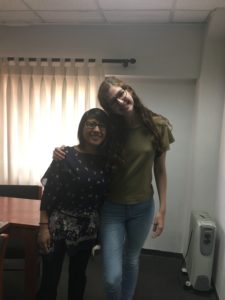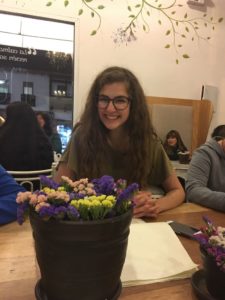Hola!
The highlight of this week was definitely the huge cultural experience in the form of Inti Raymi, the pinnacle of all Peruvian festivals. Due to this, my week was chalked full of cultural experiences resulting in a somewhat lengthy post, so I’d better get started!
My week kicked off with finally trying traditional Peruvian ceviche. I expected the ceviche to look like all the other ceviche I had seen, but it did not. Though different from what I expected, I enjoyed it all the same.
Seeing as we had some time to kill after lunch and no place to be until dinner, we finally decided to go inside of Qorikancha. I had been inside the church, but I hadn’t yet paid the entry fee required to tour the whole structure.
With the student discount, it was only 8 soles to enter the Inca-sun-temple-turned-to-spanish-monastery. I was astounded by the extensive and beautiful grounds, the large collection of art, and various exhibits inside.
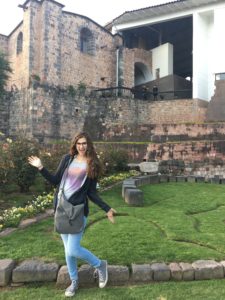
When I got back, I changed out of my church dress and went to lunch with some people from the house where I tried causa, a traditional Peruvian dish a little like a potato casserole with tuna (or some other kind of seafood). Afterwards, we wandered around the San Pedro Market area and headed back home where I met two new housemates. Back at Edy’s, we had a little fruit party with a giant pomegranate that we had bought for 4 soles on the street and a Peruvian fruit called a Chirimoya. We also had also tried a fresh cactus fruit at the San Pedro Market, so I would say on the whole, it was a pretty fruity day.
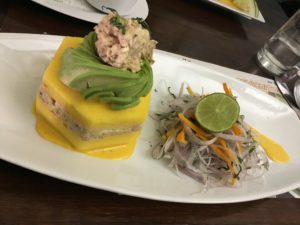
I can’t remember a day here where I haven’t eaten some sort of potato. Peru has over 3,000 different types of potatoes and they don’t let you forget it for one minute!
For the most part, during the week, I stuck to my daily routine: wake up, class, lunch break, more class, home, dinner. Monday I was a bit sickly, but luckily I got over it by Tuesday and was able to go out to lunch with some new members of my class at Yola, a Peruvian restaurant that everybody just loves. I am a big fan of their Lomo Saltado, which is a steak and french fry dish on a bed of rice covered in some sort of soy-saucy sauce. Whatever it is, is is pretty darn good.
Though this whole month is Cusco celebration month with festivals and parades galore, this past weekend marked the climax of all the celebrations. The winter solstice was June 21st, but the grand Inti Raymi festival took place this past Saturday. In preparation for the celebration, class was cancelled on Friday. It sure is a good thing that they cancelled class because the streets were absolutely and positively filled to the brim with people.
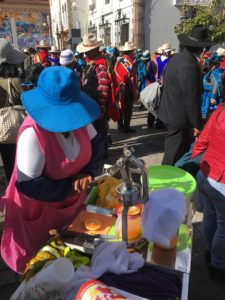
On Friday morning, I had it in my head that I would take my day off as an opportunity to hike up to Christo Blanco, the giant white Christ on the hill overlooking the Plaza. Though the Christo Blanco is a main tourist attraction very close to the city, I had yet to make the trek up the hill as it was not recommended to start the hike late in the afternoon in order to avoid falling prey to local hooligans lurking near the path to Christo Blanco prepared to wreak havoc upon unsuspecting tourists. Classes don’t end until 4pm, and because it gets dark very early here, I have never had the opportunity to make the journey. I figured that my Friday off would make for the perfect day to hike up the hill.
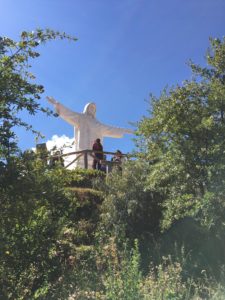
I had close to zero clue where I was going and I didn’t have my map handy, so I just had to rely on my not-so-keen sense of direction. I just did a bit of wandering in the general area of where I thought the base of the hill might be until I saw a staircase with a rusty sign that read “Christo Blanco.” I figured that this was a safe bet and surmounted the steep and narrow stairs as stray dogs swarmed around me and the sun beat steadily upon my shoulders. About halfway up the stairs, I started to doubt whether or not the staircase really led to anything at all. This was, after all, a pretty big attraction during high-tourist season, and I thought it curious that I was the only person on these run-down cement steps. Huffing and puffing my way to the top, I realized that the cement steps suddenly disappeared into dirt and trees. I thought that surely, this couldn’t be correct, and on account of the scary looking stray dogs and my being all alone, I decided it would be best just to walk all the way back down and find the correct route.
Once I finally reached the bottom and started in the opposite direction in search of some other more legitimate looking sign, an Australian tour-group passed by me. I put together that they too, were headed to Christo Blanco. The only difference between their journey to Christo Blanco and mine was that they knew where they were going and I, did not. With that, I decided to follow.
I was, I admit, a bit disappointed when the tour group started up the same steps that I had JUST climbed all the way up and all the way down, but I figured that this group of jolly-looking Australians would not lead me astray. I decided it would be to initiate conversation with the school teachers from the group on account of it being rather strange that I should just join their tour group and trail behind them all the way up the hill without explanation.
It turns out that the steps turned into a sketchy dirt path which somehow led to Christo Blanco. In any case, I am very grateful I tacked myself onto the Australian tour group because at least I was able to have a bit of company during my hike up the disconcerting path.
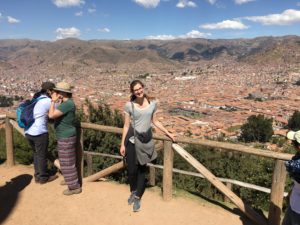
Once we reached the top of the hill and took in the view, I parted ways with my adopted tour group. They were continuing on to a nature hike, and I continued onto the small path to Christo Blanco. After hiking up the same steep stairs on a hot day twice, I was not looking my best, to say the least, so I was much relieved when I was able to finally sit down and marvel at the view from the top. I snapped a few pictures, prayed a while, and sat on a rock in pensive reflection for a bit. I figured I might as well make my visit on the hill worth the two trips up the stairs. After I had felt that I had sufficiently gotten the full “Christo Blanco” experience, I started back down the hill to meet some housemates for lunch.
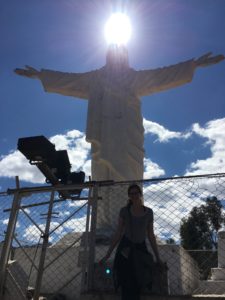
That night, we decided to just wander around the crowded streets and take in the marvels of nightlife during the peak of Cusco festival season. The two men-folk in our group purchased some street beverage and we got some street meat and had ourselves a little street feast on the steps of the San Francisco Plaza. The street meat might have been one of the best pieces of meat I have ever had. We got “anticuchos de corazon” which just look like a steak kebob with a potato on the top, but is actually the meat from the heart of the cow. I would be the first skeptic of this mysterious street meat, but I am hear to tell you that it was perfectly flavorful and tender in every way. Other meats aspire to be as wonderful as this meat. Just trust me on this one—I split one skewer with a few people from my house and we enjoyed it so much that we all decided it was of the utmost necessity to eat purchase our own.
The next day was Inti Raymi, and boy was it a day. This was supposed to be the biggest festival in all of Cusco, and though I wasn’t super jazzed about waking up earlier than I usually do on the weekends, I just knew I couldn’t bear the thought of knowing I was so close to the supposed “festivals of all festivals” and not being present. The dancing commenced at 9am on the lawn of Qorikancha, but people started to congregate there as early as 6:30am to secure prime front-row seating. I, however, on account of not wanting to miss dulce de leche “pancake” (more like crepe) morning, arrived at Qorikancha just 45 minutes before 9am. I quickly figured out that 45 minutes was far, far too late, and if I did not purchase a 10 sole banquita (a little stool), I would not really have a chance of being able to see anything. Determined not to waste 10 soles on a stool I would have to discard anyways, I channeled my inner Shaquille O’neil and just thought “tall.” Just as my father often convinces himself that he is the tallest person in any situation, I too convinced myself that I was more than tall enough to see the ceremony without the aid of any stool. When the dancing started, I was able to catch glimpses here and there standing on my tippy-toes, which was sufficient enough for me.
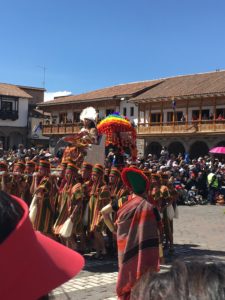
Once I got the gist of what was going on, I darted for the Plaza in hopes of securing a prime spot for viewing the parade.
Before I go any further, I’ll give a quick overview of what goes down on Inti Raymi: The festivities start on the lawn of the ancient Incan Sun Temple (Qorikancha). The many dancers perform their ritualistic dances and out from the very corner of Qorikancha in the direction of the Sun emerges the Inca High Priest where he makes his first salute to the Sun. After about an hour and a half of this, the dancers make their way from Qorikancha to the Plaza. The whole party from the lawn of Qorikancha then parades around the Plaza for about another hour. After this, everybody climbs up the mountain to the Saksayhuaman ruins right across from Christo Blanco. The main ceremony of Inti Raymi takes place here. Some people camp out in Qorikancha to ensure prime seating for the “opening ceremony,” others prefer to skip the Qorikancha dances and just wait at the Plaza, others camp out all day in Saksayhuaman, and others, like me, try to get a little taste of everything. There is also that group of people who purchase tickets for 200 USD near the main stage for the ceremony in Saksayhuman, and thus, do not have to worry about arriving early to secure seating. Thankfully, it is not necessary to purchase seats, that is, if you don’t mind being smashed in a rioting crowd on a steep hill under the beating sun for over two hours, but I’ll get to that part later.
Luckily, because I left Qorikancha about a half hour into the dancing, I was able to get to the Plaza in time to get a semi-front-row spot. It was a hot day, and I had to wait quite a while for the dancers to make their way to the Plaza, but I was glad I was able to see everything up-close.
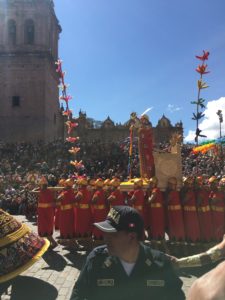
As the parade continued, I overheard a police officer tell a woman that it was not necessary to purchase tickets for the ceremony in Saksayhuaman to see the goings-on. At this point, I was still uncertain if it would be worth it to climb the mountain. I had no idea what the set-up would be like or of what the ceremony consisted, but after much internal debate, I decided I would give it a go. I figured that this was my opportunity to get the full Cusquenan experience, and I might as well take it, even if it meant climbing a mountain. I had no idea where I was going, so I just followed some dancers down a street and up a road where I eventually and very thankfully, ran into three people from my house.
We made it up the mountain and actually had to fight our way through the crowd of people. After climbing over many people, I eventually made it to a spot on a rock where I sat for two hours and lost all feelings in my legs and feet. Apparently, people weren’t very thrilled about the long and uncomfortable wait because there was much shoving, pushing, yelling, and even full on fighting.
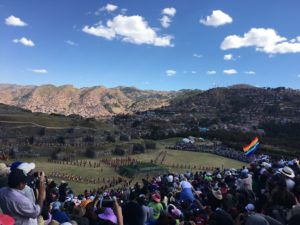
About half-way through the wait, a teachers strike broke out amidst the crowd which meant more yelling, chanting, and throwing things. The strike was justified in that the teachers of Cusco are underpaid. They only earn, on average, 1,200 soles per month, which amounts to just 400 USD a month, which is just 4,800 USD a year. For this reason, I didn’t mind the strike so much before the ceremony and even found myself chanting along caught up in the passion of it all. The problem came when the ceremony finally commenced after hours of waiting in an awkward position in the hot sun, and the strike continued to rage on. At this point, half the people were still protesting and the other half of the people started protesting the protesters. Food, water bottles, and fists went flying all during this sacred religious ceremony. It was quite the interesting situation, and though I couldn’t really hear or make out exactly what was happening on the stage, I am glad I was a part of the action. I think I would have felt that I had missed out if I hadn’t gone…and I definitely would have missed out on the llama/alpaca sacrifice (side-note: in the olden days of the Incas, they definitely sacrificed either a llama or alpaca at the ceremony, but I can’t remember which one and it was hard to see the details of this year’s sacrifice from a distance, so I couldn’t quite tell if it was real or fake. I would like to think it was fake, but both my Spanish teachers said it was a real animal sacrifice)
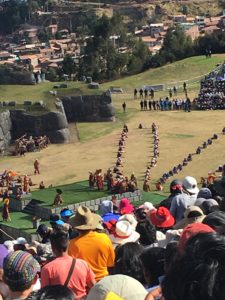
After a while of watching, we decided it was probably time to leave. By the time we got back down the mountain, it was already around 4:30 in the afternoon, and I was exhausted, hungry, and very sunburned. I walked some new people from the house to a Peruvian restaurant, but I decided just to grab a quick empanada and street pineapple so that I could go back to the house, shower, and nap. The only thing I had eaten since the breakfast hour was a piece of bread I found floating in my bag which I had taken from the house the day before and had forgotten was there. It was a very long day, and I was happy to finally be able to shower and lay in bed until dinner.
I crawled out of bed in my pajamas for dinner barely able to walk down the stairs, and in this state was somehow convinced into thinking that it would be a good idea to go to the discoteca after dinner for salsa dancing.
I found myself later that night being whipped around the dance floor for salsa hours from 9-11pm and then dancing the night (and a bit of the morning) away until l really, really couldn’t feel my legs any longer.
I woke up for mass the next morning, which was lovely, per usual, and came back to the house to relax for a bit.
After the usual Sunday spaghetti dinner, a few of us played cards in the kitchen and drank tea until about 11pm, and then I went to bed in my once-again roommate-less room.
Yesterday, I was not feeling 100%, so Vaneza, my wonderful Spanish teacher, decided I need some medicine…medicine in the form of cake, that is. We walked down to the pastelería and had our class there. Though I came down with another unfortunate fever last night, I am happy to report I am feeling much better today, all thanks to my good friends DayQuil, Emergen-C, lots of sleep, and of course, cake.
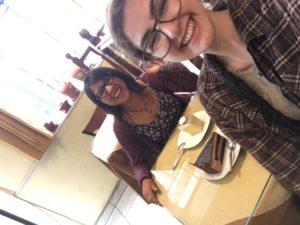
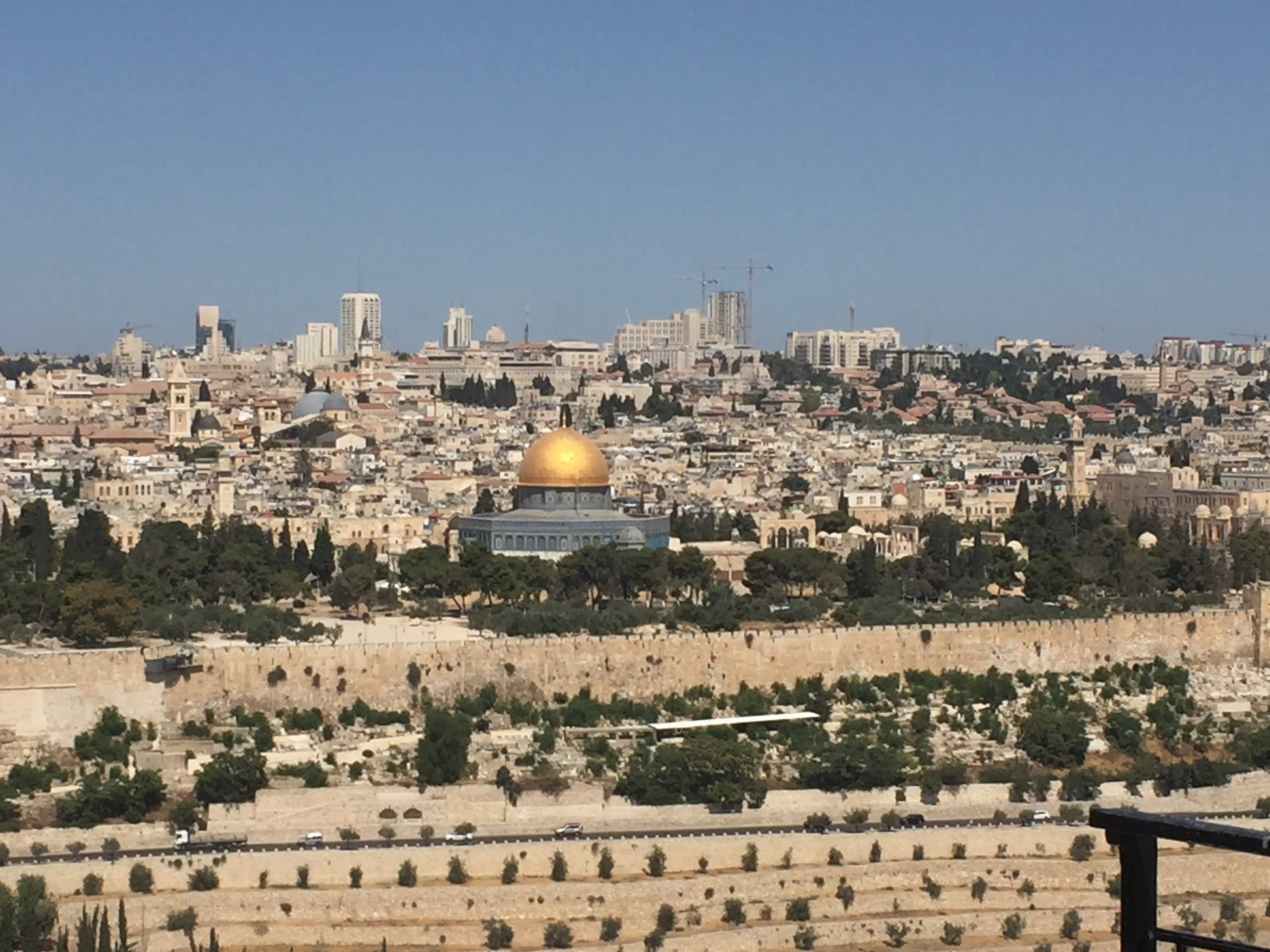
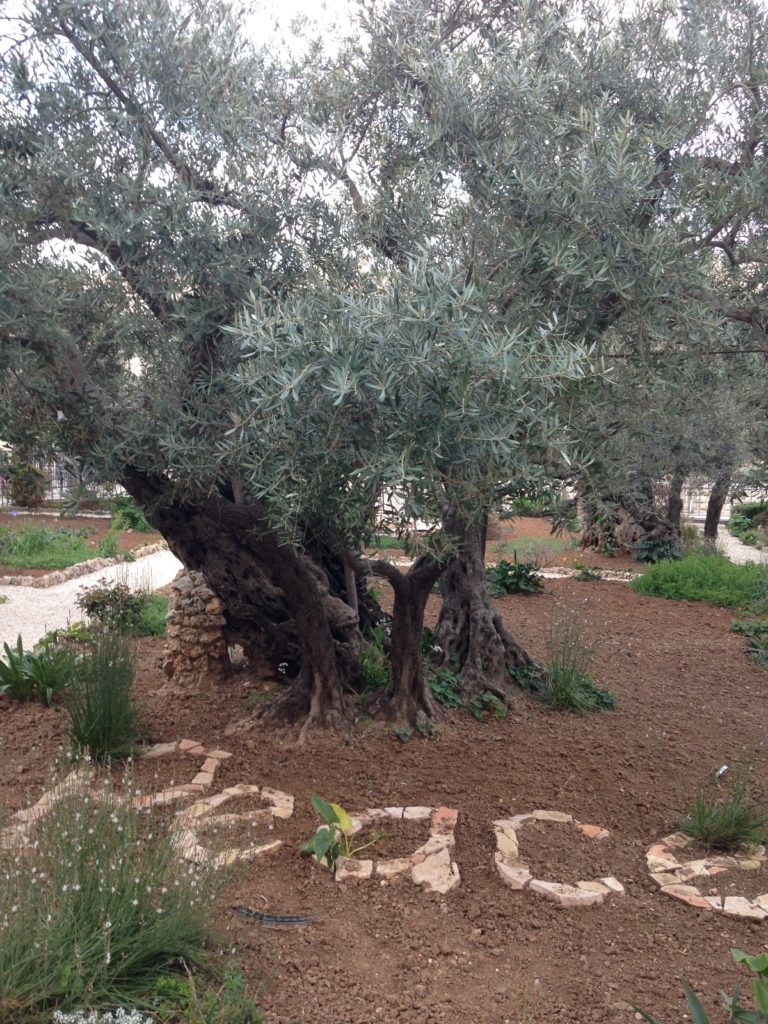
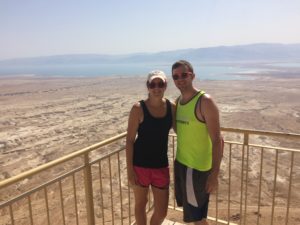
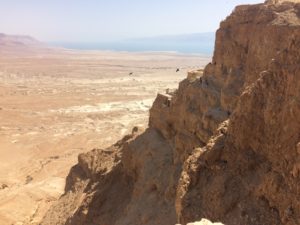 will always stand up for themselves and fight, even to the death, for the right to live here “freely”. Like all nationalist tales, it is not clear whether such stories can contribute to peace with minorities in the region.
will always stand up for themselves and fight, even to the death, for the right to live here “freely”. Like all nationalist tales, it is not clear whether such stories can contribute to peace with minorities in the region.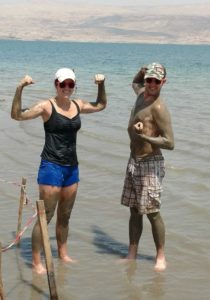 the lowest place on earth, snuggly surrounded by the Negev Desert on one side and the mountains of Jordan on the other. It is best to visit the Dead Sea in the winter as opposed to the summer months; however, while the locals are smart enough to avoid the heat, this does not stop plenty of foreign tourists risking the sun and temperatures over 110 degrees Fahrenheit. The water was so warm it felt like bathwater, and we only survived in it for about 30 minutes. However, the mud was still great–best free exfoliant a girl can get! And of course, there is nothing quite like floating effortlessly in the Dead Sea.
the lowest place on earth, snuggly surrounded by the Negev Desert on one side and the mountains of Jordan on the other. It is best to visit the Dead Sea in the winter as opposed to the summer months; however, while the locals are smart enough to avoid the heat, this does not stop plenty of foreign tourists risking the sun and temperatures over 110 degrees Fahrenheit. The water was so warm it felt like bathwater, and we only survived in it for about 30 minutes. However, the mud was still great–best free exfoliant a girl can get! And of course, there is nothing quite like floating effortlessly in the Dead Sea.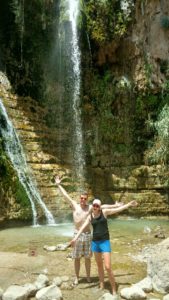 It seems impossible that anything could be green in the middle of the vast, endless Negev Desert. However, the Ein Gedi is an ancient spring that has kept the Bedouin tribes of this region able to dwell and survive here for hundreds of years. The Israeli state control of this spring for tourism has, of course, caused problems for these tribes. Keeping in mind these politics, we hiked a path cutting through the mountainsides, stopping to cool off by wading in waterfalls along the path. The water felt unbelievably refreshing in the summer heat!
It seems impossible that anything could be green in the middle of the vast, endless Negev Desert. However, the Ein Gedi is an ancient spring that has kept the Bedouin tribes of this region able to dwell and survive here for hundreds of years. The Israeli state control of this spring for tourism has, of course, caused problems for these tribes. Keeping in mind these politics, we hiked a path cutting through the mountainsides, stopping to cool off by wading in waterfalls along the path. The water felt unbelievably refreshing in the summer heat!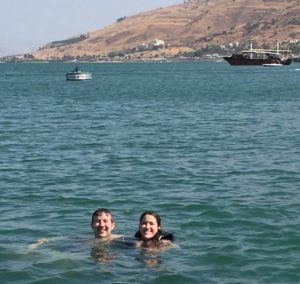
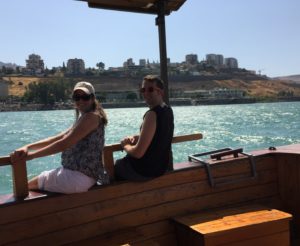
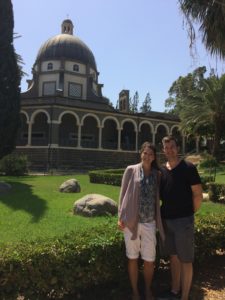 modern churches dedicated to aspects of Jesus’s ministry that constitute only ‘possible’ locations for where events in Jesus’s life might have taken place. One such church is the Church of the Beatitudes built by the Roman Catholic Church between 1936-1938 in honor of Jesus’s teaching of the ‘Sermon on the Mount’. While it is unclear whether this is the exact hill where Jesus would have delivered this sermon, it is said that Christians have paid homage to this area since at least the 4th century.Whether it is this hill or the next one over, the church and grounds are really beautiful. You cannot help but reflect on Jesus’s words as you look out onto the hills and the Sea of Galilee.
modern churches dedicated to aspects of Jesus’s ministry that constitute only ‘possible’ locations for where events in Jesus’s life might have taken place. One such church is the Church of the Beatitudes built by the Roman Catholic Church between 1936-1938 in honor of Jesus’s teaching of the ‘Sermon on the Mount’. While it is unclear whether this is the exact hill where Jesus would have delivered this sermon, it is said that Christians have paid homage to this area since at least the 4th century.Whether it is this hill or the next one over, the church and grounds are really beautiful. You cannot help but reflect on Jesus’s words as you look out onto the hills and the Sea of Galilee.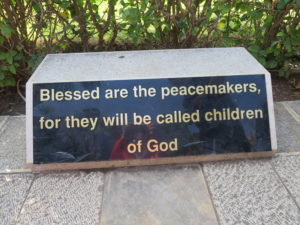 I can best use my power and privilege for good (and what the ‘good’ here even means). A few words have encouraged me along the way this summer: “
I can best use my power and privilege for good (and what the ‘good’ here even means). A few words have encouraged me along the way this summer: “
